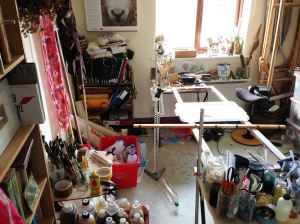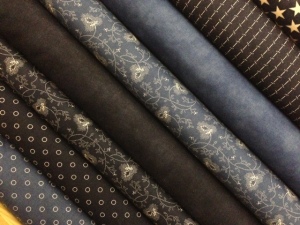What do I have in common with two new-road-protesters, a writer seeking a publisher, a foster-carer, a few craftspeople and a family history researcher ? We all met last night at the Devon Guild of Craftsmen, attending a beginners’ workshop called ‘Writing an engaging blog.’ The workshop was given by Cosmic ethical IT, a local social enterprise company.
The presenter faced a diverse group. Many of us were familiar with material she had prepared, but to others it was new and puzzling. Some of us operated blogs; others would like to, but didn’t know where to start. Few understood the full potential of interaction with other social media or the best use of tags, categories, search engine optimisation (SEO) and Rich Titles (which are nothing to do with last week’s bones in the car park).
I have distilled the evening into my own LIST of 10 useful / interesting pieces of information:
- Over a glass of Rioja or similar, identify 15 words or phrases that anyone would need to find your blog, and use them regularly in posts, tags, categories. Do this before too much of the Rioja disappears
- Decide who you are, and who your audience is, and always speak to that audience
- Words in titles of posts carry more ‘weight’ for search engines than the body of the post. Making ‘rich titles’ means including key words or phrases in the titles as well as the post
- Google spiders, which regularly trawl the internet, take sophisticated ‘snapshots’ of sites and compare them next visit, giving greater weight to updated content. Updating regularly is vital
- Having links from more prominent organisations into your site will carry more search engine weight than the other way round. Spiders can, and do, cancel out reciprocal links in their calculations!
- Pinterest is becoming a particularly important social media tool in the US. Workshop participants commented on how time-consuming it can be to maintain a Pinterest board
- The Facebook business page can be used to generate very useful statistics on the traffic into a site or blog
- You can search Google specifically for blogs with the content you want
- Using YouTube is considered very valuable and it is easy to add (properly attributed) video content to your site
- Certain types and formats of post are very popular with readers. One of these formats is THE LIST.
This is cheating, as it will make 11. But the other thing I learned was that when you wrap text around an image in WordPress, you can set a border so that the text doesn’t crowd in on it. I have disliked this but haven’t known how to avoid it. I learned how to rectify it last night by using the ‘Advanced’ settings for images. You can set the border to be white as below, not the default black. Warning: In the ‘dashboard’ stage my version looks awful, with the photo overlapping the text. But when uploaded it comes right.

Studio scene complete with empty Rioja bottles
The evening left me wondering who exactly I am in this blog, in terms of my 15 useful words or phrases. Natural dyes, history of natural dyes, dyeing, synthetic dyes, wax resist, shibori, orchil, orchil research, silk painting, indigo, Devon, teaching, workshops, lectures, talks makes 15, and I’ve used them, and it is all the serious stuff.
But it leaves no room at all for nonsense, which will surely creep in amongst the worthy natural dye and shibori. For instance, take a look at the Guardian comment generator, found via the Twitter feed of the admirable @SimonNRicketts. Press the buttons and you will generate some gems, such as this one from Gwyn Trig-Hampsteath of St Andrews:
After spending three years in a Tibetan Buddhist monastery, I find that I am able to see much more clearly the interconnections between today’s geo-political imbalances and many of our social predicaments – for instance: Isn’t it amazing that we can find £30bn to spend on Trident but we can’t afford even basic woodwind lessons for all Primary school pupils?
You see? There is currently no danger of me joining Facebook and going viral.
Thanks to Fiona of Cosmic, and to the Devon Guild of Craftsmen for organising this event.





















